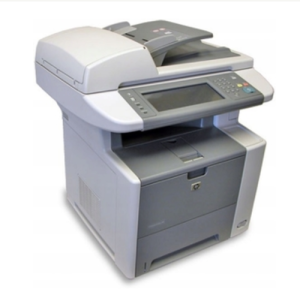
Printers have long been a part of the modern office and home. They can be used to print documents, scan important papers, create digital copies of photos, and much more. In this article, we’ll take a look at the main types of printers and scanners, give you tips on how to choose one, and look at some interesting historical facts.
Types of printers and their features
There are several main types of printers on the market, each with its own advantages and disadvantages. The most common ones are:
Laser printers. Ideal for printing large volumes of black and white documents quickly. They use toner and are quite fast. Very popular in offices.
Inkjet printers. Good for printing color images and photos. They use liquid ink, which provides high color quality.
Matrix printers. An outdated technology that is still used for specific tasks, such as printing invoices and receipts. These printers work by using needles to form an image on paper.
Sublimation printers. They are used mainly for printing high-quality photos and work on the principle of transferring ink from film to paper.
A short story from the past
The first printers appeared in the middle of the twentieth century and began their journey in the world of technology as auxiliary devices for computers. In 1953, Remington-Rand created the first high-speed printer for the UNIVAC computer, which could only print text documents. In the 1970s, laser printers were already on the scene. Xerox released the first commercial laser printer, the Xerox 9700, which significantly improved print speed and quality. Then, in 1984, Hewlett-Packard (HP) introduced the LaserJet, which was a real breakthrough and the beginning of the mass use of laser printers in businesses and homes. Inkjet printers became popular in the late 1980s and early 1990s, when Canon and Epson developed models capable of printing color images. But the first scanners were created in the 1960s. One of the first models, the Drum Scanner, used a rotating drum and a photomultiplier tube to scan images with high accuracy. In general, this technology became the basis for the modern scanners we use today.
Types of scanners
Scanners are also divided into several types, namely:
Flatbed scanners. Perhaps the most common option for home and office. They allow you to scan documents and photos in high resolution.
Extended scanners. Often used in offices to quickly scan large volumes of documents. They work by pulling paper through the scanning unit.
Portable scanners. Compact devices suitable for scanning documents while traveling.
Scanners for photographic films. Specialized devices that scan negatives and slides and convert them into digital format.
Tips for choosing
When choosing a scanner, you should pay attention to its resolution (measured in dpi), scanning speed, and compatibility with your computer’s operating system. If you plan to scan high-quality photos or documents, choose a model with a resolution of at least 600 dpi. There are also a few things to consider before buying a printer/scanner:
Purpose of use. Determine what you need the printer/scanner for – perhaps it will be for printing text documents, photos, or simply scanning large volumes of paper.
Functionality. Instead, consider multifunction devices that combine the functions of a printer, scanner, and copier. This saves a lot of space and provides greater convenience.
Maintenance costs. Find out in advance about the cost of consumables, such as ink cartridges and ink. Certain printer models have more expensive consumables, thus affecting the overall cost of use.
How to use these devices for better productivity
Use the ink saving feature. Many modern printers have an economy mode that allows you to print more pages at a lower cost. Use the right settings. For documents, set the printer to black and white, and for photos, choose high-quality color.
And don’t forget about regular cleaning. At the very least, just clean the scanner glass from dust and fingerprints. As a result, printers/scanners have indeed greatly simplified the work with documents, and the main thing is that over time, these devices have become more affordable and functional, turning every home or office into a small document center.

